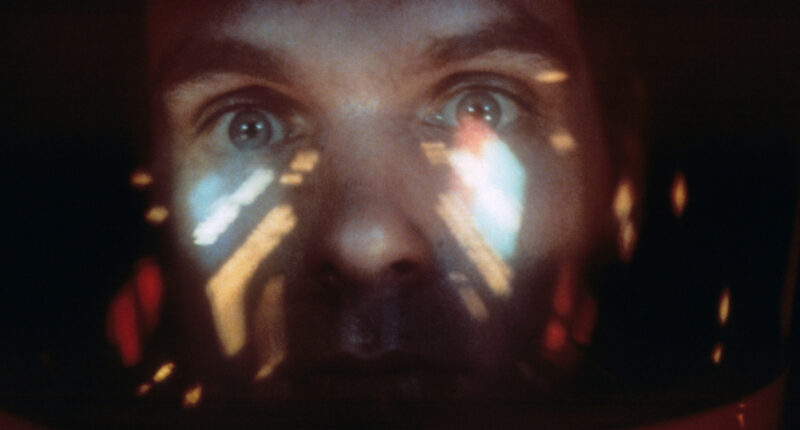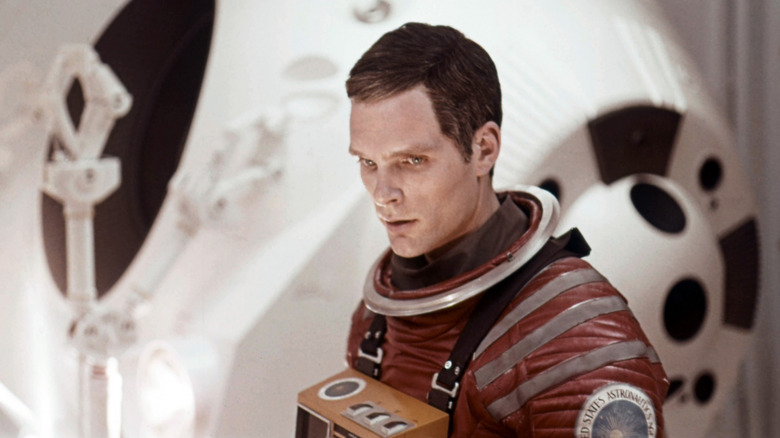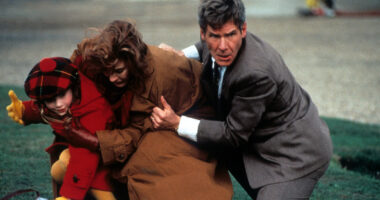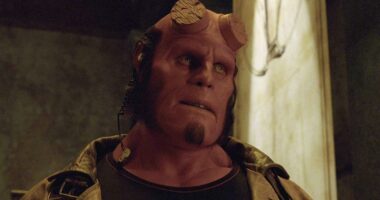Share this @internewscast.com
Genre films often fly under the radar, yet occasionally, a masterpiece emerges that reshapes cinematic history. “2001: A Space Odyssey,” released in 1968, is one such film that left an indelible mark, swiftly ascending to the ranks of the greatest sci-fi films ever made. Many regard it as a uniquely astonishing cinematic journey.
Directed by Stanley Kubrick, the film explores the impact of an enigmatic black monolith on human evolution. Most of the narrative unfolds in the vastness of space, where astronauts Dr. David Bowman (played by Keir Dullea) and Dr. Frank Poole (portrayed by Gary Lockwood) embark on a mission to trace the monolith’s origin, aided by the intelligent computer HAL 9000, voiced by Douglas Rain. Renowned critic Roger Ebert included “2001” in his Ten Greatest Films of All Time list, lauding it as “a landmark of non-narrative, poetic filmmaking,” where imagery, not dialogue, forges connections, dubbing it “a spiritual experience.”
Decades after its release, “2001” still dazzles with its groundbreaking visual effects. Ebert’s admiration is well-founded; a closer examination reveals the film’s enduring legacy. Its enduring appeal in the 2020s, much like in the 1960s, is a testament to the meticulous craftsmanship behind it. Kubrick and Arthur C. Clarke crafted a narrative that is both thought-provoking and eerie, yet it is the film’s extraordinary elements that truly set it apart. Alex North’s remarkable score, paired with Douglas Trumbull’s mind-bending visual effects, catapulted the film to unprecedented heights.
In a 1997 review, Roger Ebert remarked, “This is the work of an artist so sublimely confident that [Kubrick] doesn’t include a single shot simply to keep our attention.” Ebert praised Kubrick’s ability to seamlessly blend various elements to create a transcendent work of art, far surpassing mere entertainment. “Only a few films are transcendent, impacting our minds and imaginations like music or prayer or a vast belittling landscape,” Ebert continued. Undoubtedly, “2001” is one of these films, earning its place among the greatest movies ever made.
Roger Ebert is far from the only admirer of “2001: A Space Odyssey.” To this day, the film captivates audiences who delve into its perplexing moments, seeking deeper meanings. Furthermore, the film has inspired countless individuals within the film industry, showcasing the remarkable achievements of Kubrick and his team in 1968.
Ebert believed 2001 was one of the few transcendent films out there
The fact that “2001: A Space Odyssey” is as powerful an experience in the 2020s as it was in the 1960s is a testament to the work that went into it. Stanley Kubrick and Arthur C. Clarke invented a story that’s both suggestive and haunting, but the plot isn’t what makes it special. The phenomenal score from Alex North combined with the genuinely mind-bending visual effects from artist Douglas Trumbull broke new ground while elevating “2001” to an incredible degree.
Writing about the film in 1997, Roger Ebert said, “This is the work of an artist so sublimely confident that [Kubrick] doesn’t include a single shot simply to keep our attention.” Ebert praised Kubrick’s restraint and his combining of various elements to create a work of art that goes well beyond pure entertainment. “Only a few films are transcendent, and work upon our minds and imaginations like music or prayer or a vast belittling landscape,” Ebert added. “2001” is without a doubt one of those films, which is why so many have deemed it one of the greatest movies of all time.
The Space Odyssey legacy
Roger Ebert is far from alone in his love of “2001: A Space Odyssey.” To this day, fans continue puzzling through all the confusing moments in “2001” in search of deeper meaning. In addition, countless people in the film industry were inspired by what Kubrick and company accomplished in 1968.
Celebrating the film’s 50th anniversary in 2018, The Guardian talked to some of those most influenced, such as “The Dark Knight” and “Inception” cinematographer Wally Pfister. “It was wonderfully influential as I got into film, and started appreciating it technically,” Pfister shared, adding, “It took 40 years for visual effects to catch up with what they did.” John Gaeta, visual effects supervisor for “The Matrix,” said, “I could dot-connect where I am today back to being a young man watching 2001.” The movie’s influence even went beyond the film world. “2001” visual effects supervisor Douglas Trumbull shared, “I meet scientists, engineers and astrophysicists almost every week who say they went into their line of work because they watched the film when they were young.”
There are ways to keep the experience going, whether by watching Kubrick’s other films, reading Arthur C. Clarke’s many sequel novels, or even viewing the 1984 film follow-up “2010: The Year We Make Contact.” But even decades later, nothing touches the ambitious imagination of the original “2001: A Space Odyssey.”










